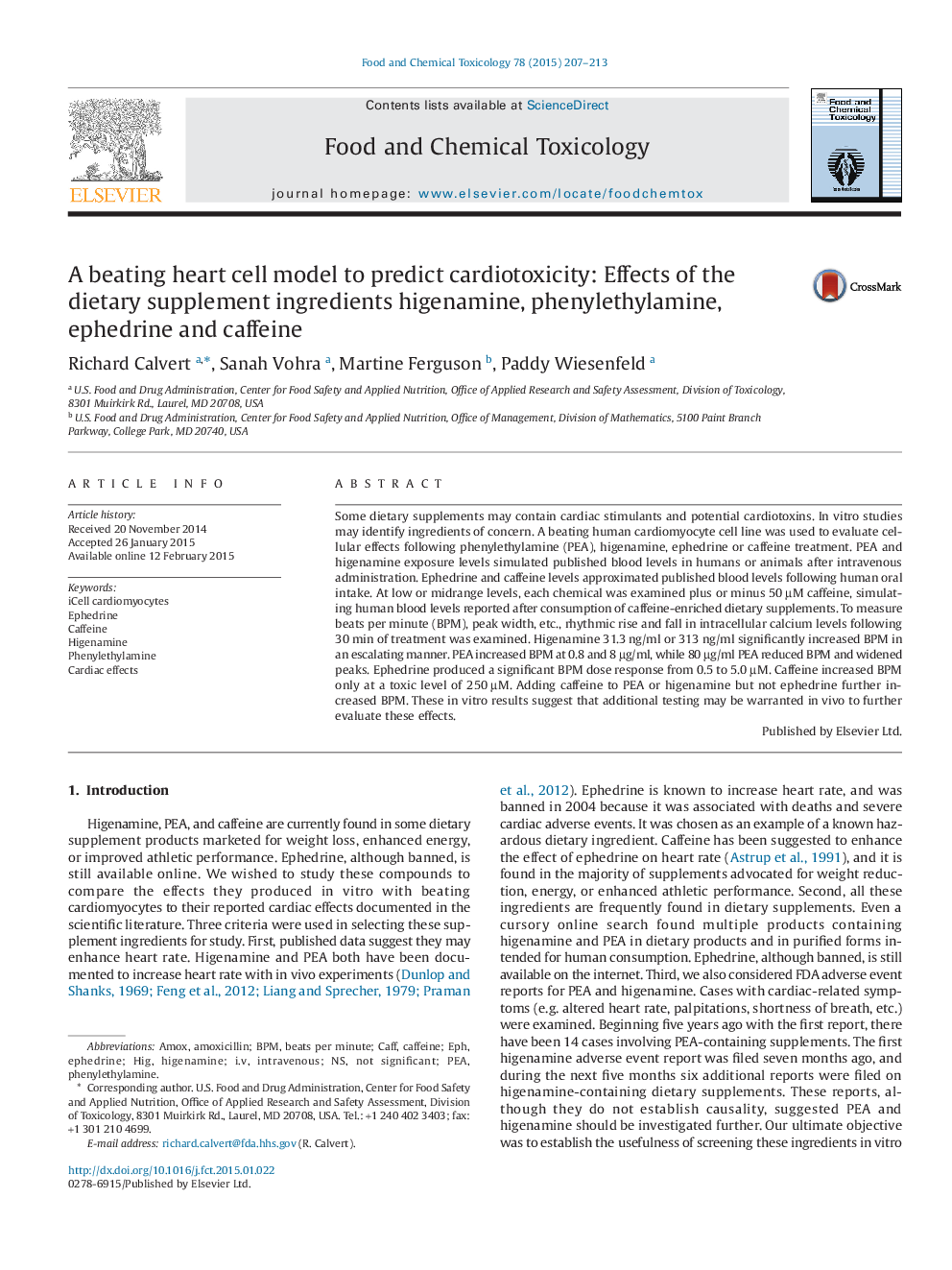| کد مقاله | کد نشریه | سال انتشار | مقاله انگلیسی | نسخه تمام متن |
|---|---|---|---|---|
| 5849939 | 1561766 | 2015 | 7 صفحه PDF | دانلود رایگان |
عنوان انگلیسی مقاله ISI
A beating heart cell model to predict cardiotoxicity: Effects of the dietary supplement ingredients higenamine, phenylethylamine, ephedrine and caffeine
ترجمه فارسی عنوان
مدل سلول های قلب ضرب و شتم برای پیش بینی سمیت قلبی: اثرات مواد افزودنی رژیم غذایی هیگینامین، فنیل اتیلامین، افدرین و کافئین
دانلود مقاله + سفارش ترجمه
دانلود مقاله ISI انگلیسی
رایگان برای ایرانیان
کلمات کلیدی
موضوعات مرتبط
علوم زیستی و بیوفناوری
علوم کشاورزی و بیولوژیک
دانش تغذیه
چکیده انگلیسی
Some dietary supplements may contain cardiac stimulants and potential cardiotoxins. In vitro studies may identify ingredients of concern. A beating human cardiomyocyte cell line was used to evaluate cellular effects following phenylethylamine (PEA), higenamine, ephedrine or caffeine treatment. PEA and higenamine exposure levels simulated published blood levels in humans or animals after intravenous administration. Ephedrine and caffeine levels approximated published blood levels following human oral intake. At low or midrange levels, each chemical was examined plus or minus 50âµM caffeine, simulating human blood levels reported after consumption of caffeine-enriched dietary supplements. To measure beats per minute (BPM), peak width, etc., rhythmic rise and fall in intracellular calcium levels following 30âmin of treatment was examined. Higenamine 31.3âng/ml or 313âng/ml significantly increased BPM in an escalating manner. PEA increased BPM at 0.8 and 8âµg/ml, while 80âµg/ml PEA reduced BPM and widened peaks. Ephedrine produced a significant BPM dose response from 0.5 to 5.0âµM. Caffeine increased BPM only at a toxic level of 250âµM. Adding caffeine to PEA or higenamine but not ephedrine further increased BPM. These in vitro results suggest that additional testing may be warranted in vivo to further evaluate these effects.
ناشر
Database: Elsevier - ScienceDirect (ساینس دایرکت)
Journal: Food and Chemical Toxicology - Volume 78, April 2015, Pages 207-213
Journal: Food and Chemical Toxicology - Volume 78, April 2015, Pages 207-213
نویسندگان
Richard Calvert, Sanah Vohra, Martine Ferguson, Paddy Wiesenfeld,
